#nikolai angelov
Explore tagged Tumblr posts
Text

Gary-Nikolai Angelov
30 notes
·
View notes
Text

The Winged Piglet by Nikolai Angelov - Gary
1 note
·
View note
Video
vimeo
Rina Sawayama - Hold The Girl from Four Elements on Vimeo.
Production Company: Partizan Service Company: Four Elements
Director: Ali Kurr EP/Producer: Mayling Wong
Production Manager: Ayo Alli Director of Photography: Diego Rosenblatt Production Designer: Lyubika Georgieva
Executive Producer (Four Elements): Rosen Savkov Producer (Four Elements): Lyubo Yonchev Production Manager (Four Elements): Samuil Djoganov UPM: Diko Boutchoukov
Creative Director: Chester Lockhart Director’s Rep: Claire Stubbs Product Manager: Tom Connick PR/ MGMT: Courtney Rosemeyer Rina’s Stylist: Jordan Kelsey
Stylist: Grozdan Mihaylov Rina’s Hair: Todor Sivov Rina’s Make-up: Mona Leanne Rina’s Nail Artist: Angel’s Nailz Choreographer – Joshua Pilmore Edit Producer: Josh Gochez Editor: Jack Williams Grade: Myles Bevan Grade Producers: Chris Aliano & Angie Broomfield VFX: B.Art VFX Producer: Nataliia Borte
Casting: Victoria Yaneva Veselina Georgieva – KOKOPELLI-MANA Ltd Violetta Garmashevskaya – International Dance Academy 360° Production Coordinator: Miglena Savkova Key PA: Zdravko Ztankov Accountant: V.Oblakova Transportation Captain: Ivan Nachev Production Runner: Nikolay Tsvetkov 1st AD: Igor Hristov 2nd AD: Yana Lekarska Steadicam Operator: Nikolay Kerezov Follow Focus: Dimitar Donchev – Shami 2nd AC: Antoni Stoev Camera Trainee: Dimitar Tsvetkov Video Assist: Alexander Vassilev DIT: Rosen Andonov BTS Photography: Veliko Balabanov BTS Video: Dragomir Dimchev
Key Gaffer: Manol Mitrev Key Grip: Mario Popov Set Dresser: Nikola Kolev Construction Manager: Stivan Cholakov
Assistant Stylist: Bogdana Kostova Hair Dresser – BG Cast: Greta Stefanova-Kandzhova Head of Makeup – BG Cast: Krasimira Petrova Makeup – BG Cast: Maria Koleva Makeup Assistant – BG Cast: Maria Simeonova Key SFX: Ivan Kazakov Assistants SFX: Vladimir Mitov Daniel Gerov Blagoslav Jenkov VFX Supervisor: Stefan Chakarov Playback: Martin Georgiev
Stunt Coordinator: Velizar Peev Stunt Assistants: Hristiyan Hristov Rosen Milanov Stunt Double - RINA – Desislava Asenova
DANCERS: Victoria Yaneva Stefania Stoyanova Kevin Kostov Daniel Binev
Victor Angelov Betina Dimitrova Petra Nedyalkova Georgi Georgiev Tsvetan Apostolov Lora Ivanova Victoria Petkova Kalin Zhelev
0 notes
Photo

Bulgarian Arts
Through Centuries and Communist Rule
Ancient Treasures
The oldest Bulgarian art traces back to 12th-century mural paintings in Bachkovo Monastery. Between the 12th and 14th centuries, small cross-shaped churches with domes emerged. While Byzantine and Oriental influences shaped early art, western European influence gained prominence, especially in the painting center of Tirnovo. Contemporary artists like Anton Mitov, Ivan Angelov, Andrei Nikolov, and Ivan Lazarov continue the rich artistic tradition.
The Stage and Melodies
The National Opera (1890) and National Theater (1907) contributed to Bulgaria’s theatrical and musical heritage. Renowned singers such as Luba Velich, Boris Christov, and Elena Nikolai achieved global acclaim. Notable composers like A. Bukureshtliev, Dobri Christov, Pancho Vladigerov, and Petko Stainov enriched the musical landscape Private Istanbul Tour.
Cultural Landscape Under Communism
Communist influence since 1947 significantly impacted Bulgarian literature and art. The Communist Party’s control extended to all cultural and educational entities, enforcing adherence to party dictates. Literary classics contrary to Communist policies were banned, and censorship stifled creativity.
Resistance emerged, notably from non-Communist writer Trifon Kunev, who faced imprisonment and death in 1954. Communist Party member and painter Alexander Zhendov protested censorship in 1950, leading to his tragic suicide in 1951. Further dissent unfolded after the Soviet Communist Party’s 20th Congress in 1957, challenging the “cult of personality.” Playwright Todor Guenov’s “Fear” stood out, joined by other dissenting voices like Pavel Vezhinov, Orlin Vasilev, Emil Manov, Liudmil Stoyanov, and critic Boris Delchev.
Despite resistance, Bulgarian culture under Communist rule became a satellite of Soviet ideology, losing its originality. Subject to Party dogma, it served Soviet imperialistic and ideological goals, leaving an indelible mark on the nation’s cultural identity.
0 notes
Photo
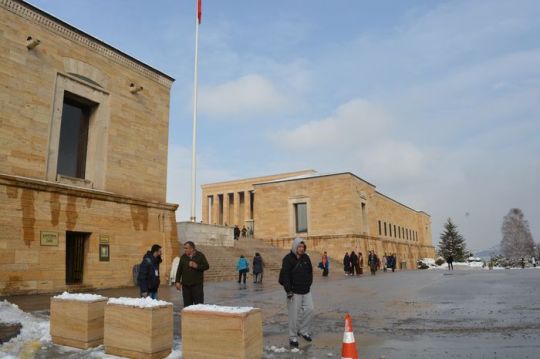
Bulgarian Arts
Through Centuries and Communist Rule
Ancient Treasures
The oldest Bulgarian art traces back to 12th-century mural paintings in Bachkovo Monastery. Between the 12th and 14th centuries, small cross-shaped churches with domes emerged. While Byzantine and Oriental influences shaped early art, western European influence gained prominence, especially in the painting center of Tirnovo. Contemporary artists like Anton Mitov, Ivan Angelov, Andrei Nikolov, and Ivan Lazarov continue the rich artistic tradition.
The Stage and Melodies
The National Opera (1890) and National Theater (1907) contributed to Bulgaria’s theatrical and musical heritage. Renowned singers such as Luba Velich, Boris Christov, and Elena Nikolai achieved global acclaim. Notable composers like A. Bukureshtliev, Dobri Christov, Pancho Vladigerov, and Petko Stainov enriched the musical landscape Private Istanbul Tour.
Cultural Landscape Under Communism
Communist influence since 1947 significantly impacted Bulgarian literature and art. The Communist Party’s control extended to all cultural and educational entities, enforcing adherence to party dictates. Literary classics contrary to Communist policies were banned, and censorship stifled creativity.
Resistance emerged, notably from non-Communist writer Trifon Kunev, who faced imprisonment and death in 1954. Communist Party member and painter Alexander Zhendov protested censorship in 1950, leading to his tragic suicide in 1951. Further dissent unfolded after the Soviet Communist Party’s 20th Congress in 1957, challenging the “cult of personality.” Playwright Todor Guenov’s “Fear” stood out, joined by other dissenting voices like Pavel Vezhinov, Orlin Vasilev, Emil Manov, Liudmil Stoyanov, and critic Boris Delchev.
Despite resistance, Bulgarian culture under Communist rule became a satellite of Soviet ideology, losing its originality. Subject to Party dogma, it served Soviet imperialistic and ideological goals, leaving an indelible mark on the nation’s cultural identity.
0 notes
Photo

Bulgarian Arts
Through Centuries and Communist Rule
Ancient Treasures
The oldest Bulgarian art traces back to 12th-century mural paintings in Bachkovo Monastery. Between the 12th and 14th centuries, small cross-shaped churches with domes emerged. While Byzantine and Oriental influences shaped early art, western European influence gained prominence, especially in the painting center of Tirnovo. Contemporary artists like Anton Mitov, Ivan Angelov, Andrei Nikolov, and Ivan Lazarov continue the rich artistic tradition.
The Stage and Melodies
The National Opera (1890) and National Theater (1907) contributed to Bulgaria’s theatrical and musical heritage. Renowned singers such as Luba Velich, Boris Christov, and Elena Nikolai achieved global acclaim. Notable composers like A. Bukureshtliev, Dobri Christov, Pancho Vladigerov, and Petko Stainov enriched the musical landscape Private Istanbul Tour.
Cultural Landscape Under Communism
Communist influence since 1947 significantly impacted Bulgarian literature and art. The Communist Party’s control extended to all cultural and educational entities, enforcing adherence to party dictates. Literary classics contrary to Communist policies were banned, and censorship stifled creativity.
Resistance emerged, notably from non-Communist writer Trifon Kunev, who faced imprisonment and death in 1954. Communist Party member and painter Alexander Zhendov protested censorship in 1950, leading to his tragic suicide in 1951. Further dissent unfolded after the Soviet Communist Party’s 20th Congress in 1957, challenging the “cult of personality.” Playwright Todor Guenov’s “Fear” stood out, joined by other dissenting voices like Pavel Vezhinov, Orlin Vasilev, Emil Manov, Liudmil Stoyanov, and critic Boris Delchev.
Despite resistance, Bulgarian culture under Communist rule became a satellite of Soviet ideology, losing its originality. Subject to Party dogma, it served Soviet imperialistic and ideological goals, leaving an indelible mark on the nation’s cultural identity.
0 notes
Photo

Bulgarian Arts
Through Centuries and Communist Rule
Ancient Treasures
The oldest Bulgarian art traces back to 12th-century mural paintings in Bachkovo Monastery. Between the 12th and 14th centuries, small cross-shaped churches with domes emerged. While Byzantine and Oriental influences shaped early art, western European influence gained prominence, especially in the painting center of Tirnovo. Contemporary artists like Anton Mitov, Ivan Angelov, Andrei Nikolov, and Ivan Lazarov continue the rich artistic tradition.
The Stage and Melodies
The National Opera (1890) and National Theater (1907) contributed to Bulgaria’s theatrical and musical heritage. Renowned singers such as Luba Velich, Boris Christov, and Elena Nikolai achieved global acclaim. Notable composers like A. Bukureshtliev, Dobri Christov, Pancho Vladigerov, and Petko Stainov enriched the musical landscape Private Istanbul Tour.
Cultural Landscape Under Communism
Communist influence since 1947 significantly impacted Bulgarian literature and art. The Communist Party’s control extended to all cultural and educational entities, enforcing adherence to party dictates. Literary classics contrary to Communist policies were banned, and censorship stifled creativity.
Resistance emerged, notably from non-Communist writer Trifon Kunev, who faced imprisonment and death in 1954. Communist Party member and painter Alexander Zhendov protested censorship in 1950, leading to his tragic suicide in 1951. Further dissent unfolded after the Soviet Communist Party’s 20th Congress in 1957, challenging the “cult of personality.” Playwright Todor Guenov’s “Fear” stood out, joined by other dissenting voices like Pavel Vezhinov, Orlin Vasilev, Emil Manov, Liudmil Stoyanov, and critic Boris Delchev.
Despite resistance, Bulgarian culture under Communist rule became a satellite of Soviet ideology, losing its originality. Subject to Party dogma, it served Soviet imperialistic and ideological goals, leaving an indelible mark on the nation’s cultural identity.
0 notes
Photo
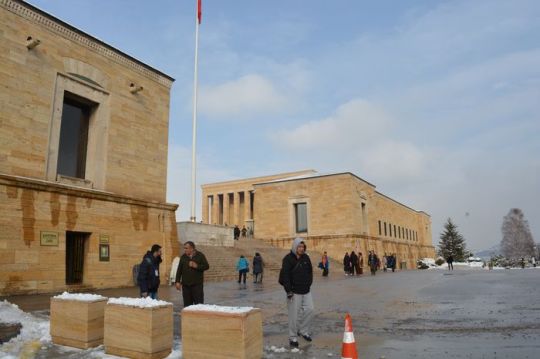
Bulgarian Arts
Through Centuries and Communist Rule
Ancient Treasures
The oldest Bulgarian art traces back to 12th-century mural paintings in Bachkovo Monastery. Between the 12th and 14th centuries, small cross-shaped churches with domes emerged. While Byzantine and Oriental influences shaped early art, western European influence gained prominence, especially in the painting center of Tirnovo. Contemporary artists like Anton Mitov, Ivan Angelov, Andrei Nikolov, and Ivan Lazarov continue the rich artistic tradition.
The Stage and Melodies
The National Opera (1890) and National Theater (1907) contributed to Bulgaria’s theatrical and musical heritage. Renowned singers such as Luba Velich, Boris Christov, and Elena Nikolai achieved global acclaim. Notable composers like A. Bukureshtliev, Dobri Christov, Pancho Vladigerov, and Petko Stainov enriched the musical landscape Private Istanbul Tour.
Cultural Landscape Under Communism
Communist influence since 1947 significantly impacted Bulgarian literature and art. The Communist Party’s control extended to all cultural and educational entities, enforcing adherence to party dictates. Literary classics contrary to Communist policies were banned, and censorship stifled creativity.
Resistance emerged, notably from non-Communist writer Trifon Kunev, who faced imprisonment and death in 1954. Communist Party member and painter Alexander Zhendov protested censorship in 1950, leading to his tragic suicide in 1951. Further dissent unfolded after the Soviet Communist Party’s 20th Congress in 1957, challenging the “cult of personality.” Playwright Todor Guenov’s “Fear” stood out, joined by other dissenting voices like Pavel Vezhinov, Orlin Vasilev, Emil Manov, Liudmil Stoyanov, and critic Boris Delchev.
Despite resistance, Bulgarian culture under Communist rule became a satellite of Soviet ideology, losing its originality. Subject to Party dogma, it served Soviet imperialistic and ideological goals, leaving an indelible mark on the nation’s cultural identity.
0 notes
Text

Love
Gary-Nikolai Angelov
49 notes
·
View notes
Photo
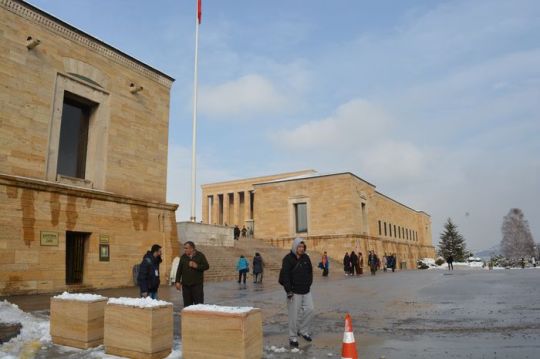
Bulgarian Arts
Through Centuries and Communist Rule
Ancient Treasures
The oldest Bulgarian art traces back to 12th-century mural paintings in Bachkovo Monastery. Between the 12th and 14th centuries, small cross-shaped churches with domes emerged. While Byzantine and Oriental influences shaped early art, western European influence gained prominence, especially in the painting center of Tirnovo. Contemporary artists like Anton Mitov, Ivan Angelov, Andrei Nikolov, and Ivan Lazarov continue the rich artistic tradition.
The Stage and Melodies
The National Opera (1890) and National Theater (1907) contributed to Bulgaria’s theatrical and musical heritage. Renowned singers such as Luba Velich, Boris Christov, and Elena Nikolai achieved global acclaim. Notable composers like A. Bukureshtliev, Dobri Christov, Pancho Vladigerov, and Petko Stainov enriched the musical landscape Private Istanbul Tour.
Cultural Landscape Under Communism
Communist influence since 1947 significantly impacted Bulgarian literature and art. The Communist Party’s control extended to all cultural and educational entities, enforcing adherence to party dictates. Literary classics contrary to Communist policies were banned, and censorship stifled creativity.
Resistance emerged, notably from non-Communist writer Trifon Kunev, who faced imprisonment and death in 1954. Communist Party member and painter Alexander Zhendov protested censorship in 1950, leading to his tragic suicide in 1951. Further dissent unfolded after the Soviet Communist Party’s 20th Congress in 1957, challenging the “cult of personality.” Playwright Todor Guenov’s “Fear” stood out, joined by other dissenting voices like Pavel Vezhinov, Orlin Vasilev, Emil Manov, Liudmil Stoyanov, and critic Boris Delchev.
Despite resistance, Bulgarian culture under Communist rule became a satellite of Soviet ideology, losing its originality. Subject to Party dogma, it served Soviet imperialistic and ideological goals, leaving an indelible mark on the nation’s cultural identity.
0 notes
Photo
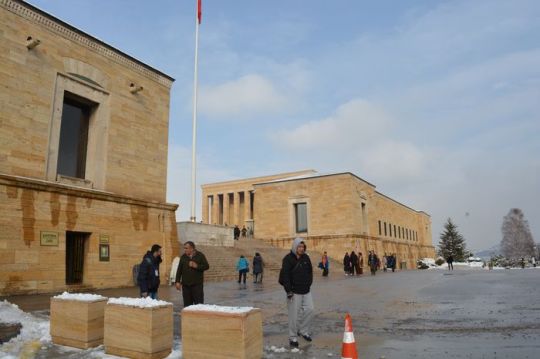
Bulgarian Arts
Through Centuries and Communist Rule
Ancient Treasures
The oldest Bulgarian art traces back to 12th-century mural paintings in Bachkovo Monastery. Between the 12th and 14th centuries, small cross-shaped churches with domes emerged. While Byzantine and Oriental influences shaped early art, western European influence gained prominence, especially in the painting center of Tirnovo. Contemporary artists like Anton Mitov, Ivan Angelov, Andrei Nikolov, and Ivan Lazarov continue the rich artistic tradition.
The Stage and Melodies
The National Opera (1890) and National Theater (1907) contributed to Bulgaria’s theatrical and musical heritage. Renowned singers such as Luba Velich, Boris Christov, and Elena Nikolai achieved global acclaim. Notable composers like A. Bukureshtliev, Dobri Christov, Pancho Vladigerov, and Petko Stainov enriched the musical landscape Private Istanbul Tour.
Cultural Landscape Under Communism
Communist influence since 1947 significantly impacted Bulgarian literature and art. The Communist Party’s control extended to all cultural and educational entities, enforcing adherence to party dictates. Literary classics contrary to Communist policies were banned, and censorship stifled creativity.
Resistance emerged, notably from non-Communist writer Trifon Kunev, who faced imprisonment and death in 1954. Communist Party member and painter Alexander Zhendov protested censorship in 1950, leading to his tragic suicide in 1951. Further dissent unfolded after the Soviet Communist Party’s 20th Congress in 1957, challenging the “cult of personality.” Playwright Todor Guenov’s “Fear” stood out, joined by other dissenting voices like Pavel Vezhinov, Orlin Vasilev, Emil Manov, Liudmil Stoyanov, and critic Boris Delchev.
Despite resistance, Bulgarian culture under Communist rule became a satellite of Soviet ideology, losing its originality. Subject to Party dogma, it served Soviet imperialistic and ideological goals, leaving an indelible mark on the nation’s cultural identity.
0 notes
Photo
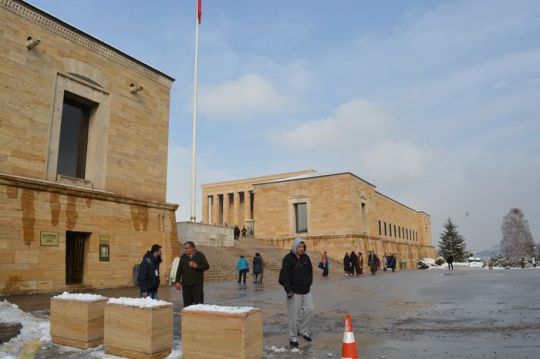
Bulgarian Arts
Through Centuries and Communist Rule
Ancient Treasures
The oldest Bulgarian art traces back to 12th-century mural paintings in Bachkovo Monastery. Between the 12th and 14th centuries, small cross-shaped churches with domes emerged. While Byzantine and Oriental influences shaped early art, western European influence gained prominence, especially in the painting center of Tirnovo. Contemporary artists like Anton Mitov, Ivan Angelov, Andrei Nikolov, and Ivan Lazarov continue the rich artistic tradition.
The Stage and Melodies
The National Opera (1890) and National Theater (1907) contributed to Bulgaria’s theatrical and musical heritage. Renowned singers such as Luba Velich, Boris Christov, and Elena Nikolai achieved global acclaim. Notable composers like A. Bukureshtliev, Dobri Christov, Pancho Vladigerov, and Petko Stainov enriched the musical landscape Private Istanbul Tour.
Cultural Landscape Under Communism
Communist influence since 1947 significantly impacted Bulgarian literature and art. The Communist Party’s control extended to all cultural and educational entities, enforcing adherence to party dictates. Literary classics contrary to Communist policies were banned, and censorship stifled creativity.
Resistance emerged, notably from non-Communist writer Trifon Kunev, who faced imprisonment and death in 1954. Communist Party member and painter Alexander Zhendov protested censorship in 1950, leading to his tragic suicide in 1951. Further dissent unfolded after the Soviet Communist Party’s 20th Congress in 1957, challenging the “cult of personality.” Playwright Todor Guenov’s “Fear” stood out, joined by other dissenting voices like Pavel Vezhinov, Orlin Vasilev, Emil Manov, Liudmil Stoyanov, and critic Boris Delchev.
Despite resistance, Bulgarian culture under Communist rule became a satellite of Soviet ideology, losing its originality. Subject to Party dogma, it served Soviet imperialistic and ideological goals, leaving an indelible mark on the nation’s cultural identity.
0 notes
Photo
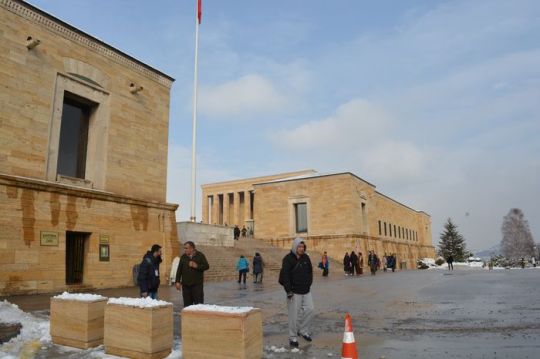
Bulgarian Arts
Through Centuries and Communist Rule
Ancient Treasures
The oldest Bulgarian art traces back to 12th-century mural paintings in Bachkovo Monastery. Between the 12th and 14th centuries, small cross-shaped churches with domes emerged. While Byzantine and Oriental influences shaped early art, western European influence gained prominence, especially in the painting center of Tirnovo. Contemporary artists like Anton Mitov, Ivan Angelov, Andrei Nikolov, and Ivan Lazarov continue the rich artistic tradition.
The Stage and Melodies
The National Opera (1890) and National Theater (1907) contributed to Bulgaria’s theatrical and musical heritage. Renowned singers such as Luba Velich, Boris Christov, and Elena Nikolai achieved global acclaim. Notable composers like A. Bukureshtliev, Dobri Christov, Pancho Vladigerov, and Petko Stainov enriched the musical landscape Private Istanbul Tour.
Cultural Landscape Under Communism
Communist influence since 1947 significantly impacted Bulgarian literature and art. The Communist Party’s control extended to all cultural and educational entities, enforcing adherence to party dictates. Literary classics contrary to Communist policies were banned, and censorship stifled creativity.
Resistance emerged, notably from non-Communist writer Trifon Kunev, who faced imprisonment and death in 1954. Communist Party member and painter Alexander Zhendov protested censorship in 1950, leading to his tragic suicide in 1951. Further dissent unfolded after the Soviet Communist Party’s 20th Congress in 1957, challenging the “cult of personality.” Playwright Todor Guenov’s “Fear” stood out, joined by other dissenting voices like Pavel Vezhinov, Orlin Vasilev, Emil Manov, Liudmil Stoyanov, and critic Boris Delchev.
Despite resistance, Bulgarian culture under Communist rule became a satellite of Soviet ideology, losing its originality. Subject to Party dogma, it served Soviet imperialistic and ideological goals, leaving an indelible mark on the nation’s cultural identity.
0 notes


